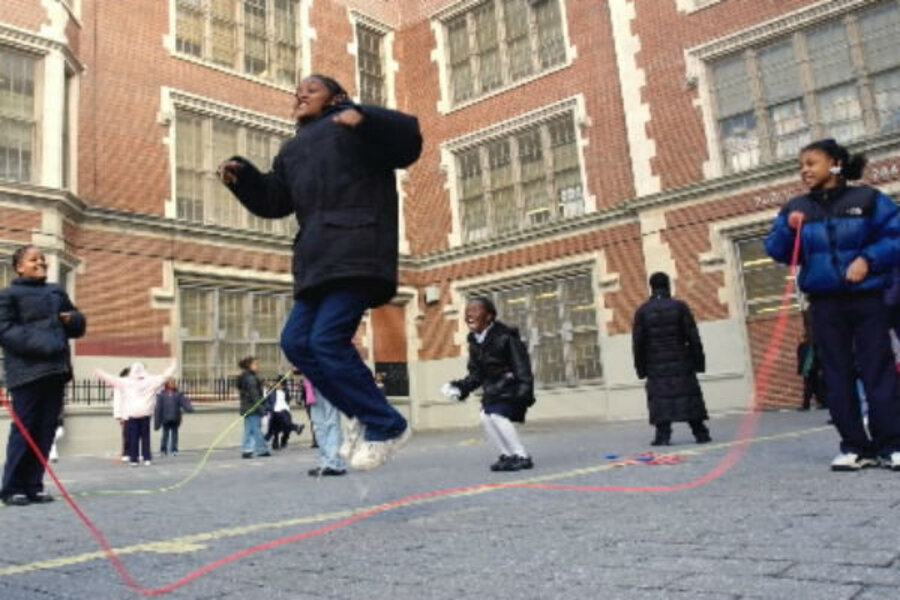Kids, educators debate recess plan that may prevent bullying
Loading...
One of the largest independent recess programs in the country reduces bullying, improves classroom behavior and creates safer schools – at least according to teachers. Students, however, seem to have a different point of view.
This is from a new rigorous, random assignment study by researchers at Mathematica Policy Research and the John W. Gardner Center for Youth and Their Communities at Stanford University, in Stanford, Calif. The researchers compared schools using Playworks – a recess initiative that has won hundreds of millions of grant dollars and is used in hundreds of low income elementary schools – to those that had requested, but did not yet have, the program.
To advocates of Playworks, including chief executive officers Jill Vialet, the findings add to a growing body of research pointing to the importance of play and recess for children.
“We’re really excited to see the results,” Ms. Vialet said. “We’re not even an anti-bullying program. [The research] pointed to me how clearly bullying is really a behavior. It’s a behavior that can be addressed by emphasizing other behaviors and giving kids skills.”
But take closer look at the study and there are some significant questions, as well.
Most notably, there’s a big difference in how teachers and students perceived the impact of Playworks – a program that gives more structure to recess, with “coaches” leading games, helping kids moderate conflicts and encouraging physical activity.
While teachers in schools using Playworks reported significantly less bullying and exclusionary behavior, there was no difference in student perception of aggressive behavior, the ability to get along with other students or resolving conflicts.
So what’s up?
Susanne James-Burdumy, associate director of Mathematica Policy Research, said researchers have been thinking about why the disparity exists.
It could potentially be study related, she said. While teachers filled out their surveys based on observations of first through fifth graders, the only students to fill out surveys were in fourth and fifth grade. (Researchers worried that younger kids would not give accurate results.) Or, she said, there might simply be different perspectives about Playworks.
“Students and teachers may have different perceptions of what’s happening during recess and during the school day,” she said.
Which leads to another big finding. One of the most statistically important findings was that with Playworks, teachers believe students move more effectively from recess to the classroom.
This, it seems, would make sense. Playworks is structured by design, and began as a way to make the school day easier for teachers – while preserving play at the same time.
Vialet says she was inspired to start the program after talking with principals who told her that recess was the worst part of the day – a time when kids would get out of control and fights would start, often leading into the classroom. She says that it seemed that students were not using recess for the sort of beneficial play that she remembered as a kid.
“What I was seeing out in schools was that the recess I remember wasn’t happening,” she said.
She believed that replicating the sort of sandlot structure of older kids teaching younger kids how to play games – of introducing games like “rock, paper, scissors” to resolve conflicts, of “mapping” out a playground so everyone knew that basketball would be played here and jump rope there – would go far in both making a more fulfilling recess for kids, and a better school day for the grown-ups.
But does an easier time for teachers translate into effective play? Certainly for beleaguered public schools administrators. But for kids?
More results from the study – due to come out in about a year – may give more insight. That data will explore the difference in recess behavior between students in Playworks and non Playworks schools.






